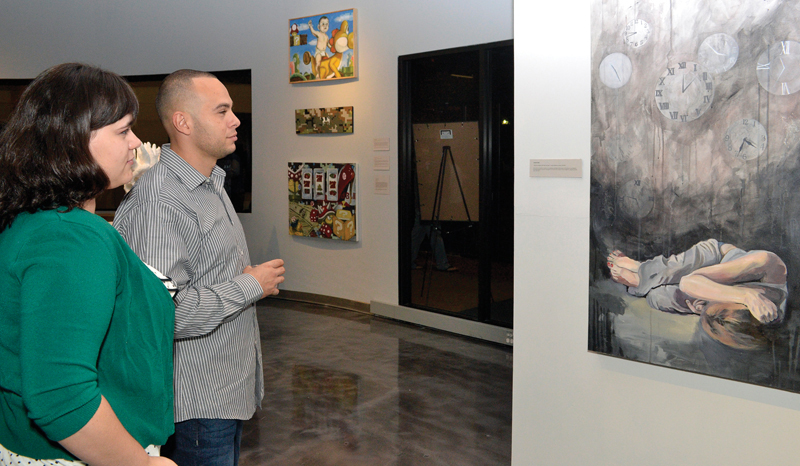Gaining Steam
Spring
2013
Feature
Connecting Worlds
Gaining Steam
Carla Poindexter

The UCF STEAM project is the result of work by many STEM and Arts faculty members and students. Theo Lotz, a project Co-PI and Fine Art Instructor of Undergraduate and Graduate Studies at UCF, initiated the STEAM project. Lotz envisioned seminars in which STEM researchers and Fine Art undergraduate faculty and students interacted and collaborated to explore and understand each other’s discipline. “I have always felt that the Sciences and the Arts were not that different in their processes. Both are creative endeavors that benefit from experimentation, exploration, and trusting one’s intuition. I wanted the UCF art students to see that their studio process is very similar to the laboratory process of the science students,” said Lotz.
Although one initial goal of the STEAM project was to expose fine arts students to complex STEM research, faculty and project facilitators quickly realized that the potential for creative thinking and learning was far greater for student participants from both disciplines. During the projects, as formal discourse evolved into more casual sharing of information and ideas, collaborations began to naturally occur. Initial visual articulation of STEM theories and applications evolved from illustration to creative visual reactions to the research presented.
Eventually, competition for the best ideas and most compelling images between art students and collaborative pairs evolved. This led the fine art students to experience a less-understood process of inquiry and discovery that is familiar to mature artists. The process closely relates to what is employed in basic scientific inquiry.
For a student involved in basic artistic research, creative discovery involves the formulation of questions based on intuition and knowledge of the subject, followed by testing and retesting until a suitable, personally relevant, solution – their finished artwork — is found. This mostly private undertaking is followed by public scrutiny in the form of a group critique of the work by instructors and peers, which when effective, leads to essential skills of self-criticality and eventually, a creative visual outcome.
While the scientific method investigates phenomena in an effort to find empirical truth, it could be argued that an artist investigates phenomena in the effort to experience the myriad possibilities between truth and untruth. In art, the answer to the inquiry or hypothesis is never intended to confirm reality, only to lead to more inquiry — so that art is always a series of questions to be contemplated, not solved.
